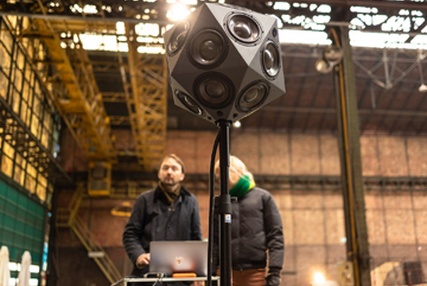Organisé par le Forum Ircam et le département de la Pédagogie, venez assister à un après-midi permettant d'avoir une vue d'ensemble des technologies de l'Ircam. Vous découvrirez les nouvelles technologies de l’Ircam sous la forme d’une introduction destinée aux débutants avec démonstrations et conférences.
Programme
Composer avec OpenMusic
avec Claudia Jane Scroccaro, réalisatrice en informatique musicale
Salle Stravinsky
Deux sessions de 45 minutes à 15h et 16h
OpenMusic (OM) est un langage de programmation visuelle pour la composition musicale assistée par ordinateur créé à l'Ircam, héritant d'une longue tradition de recherche en composition assistée par ordinateur. OM peut être utilisé comme un langage de programmation fonctionnel/objet/visuel à usage général. Un ensemble de classes et de librairies fournies en font un environnement très pratique pour la composition musicale. Différentes représentations d'un processus musical sont gérées, parmi lesquelles la notation musicale, le piano-roll midi, le signal sonore et une organisation temporelle de haut niveau du matériel musical est proposée à travers le concept de « maquette ».
Atelier geste et sonification
avec Sébastien Naves, réalisateur en informatique musicale
Salle Nono
Deux sessions de 45 minutes à 15h et 16h, places limitées
L'écriture musicale « conventionnelle » conduit à la production de son associé, par le biais d'un geste musical spécifique de l’instrument qui le produit. En d’autres termes l’écriture d’une note suppose un geste lié à l’instrument.
Dans le cas de la synthèse informatique (que l’on peut étendre au cas particulier même de la transformation d’un son), par défaut, l’instrument physique n’existant pas, aucun geste n’y est associé à l'origine. C’est l'opportunité d’aborder une trajectoire inversée en commençant par le geste muet (celui d’un•e danseur•se par exemple) comme générateur d’un son ou comme acteur de la transformation d’un son.
Cet atelier propose d’introduire la question de la sonification du geste au travers d’un exemple de session Live (Ableton) prêt à l’emploi et de capteurs embarqué Riot. Si le temps le permet nous essaierons de proposer une stratégie initiale pour l'élaboration de la sonification : Geste - Contrôles - Son
- Analyse du phénomène gestuel ;
- Collecte des données ;
- Description sonore d’un son ou d’un traitement associé : temps, amplitudes (enveloppes) , fréquences et spatialisation (porteuse d’un geste sonore dans l'espace) ;
- Établissement d’une cartographie des contrôles entre le capteur et le générateur/transformateur de son.
Découverte du système de diffusion « ambisonique »
avec Johannes Régnier, réalisatrice en informatique musicale
Vigie
Deux sessions d'une heure à 15h et 16h, place limitées
Grâce à un système de diffusion « ambisonique », nous redécouvrons notre façon de percevoir le monde. Nous réalisons la richesse des processus perceptifs de l'audition qui nous font « sentir », « entendre », « écouter » notre environnement. Entre les mains de créateurs tels que les compositeurs, cet outil devient un instrument qui dessine et virtualise également l'espace. Des exemples matérialiseront cette technologie de projection sonore et son caractère immersif.



